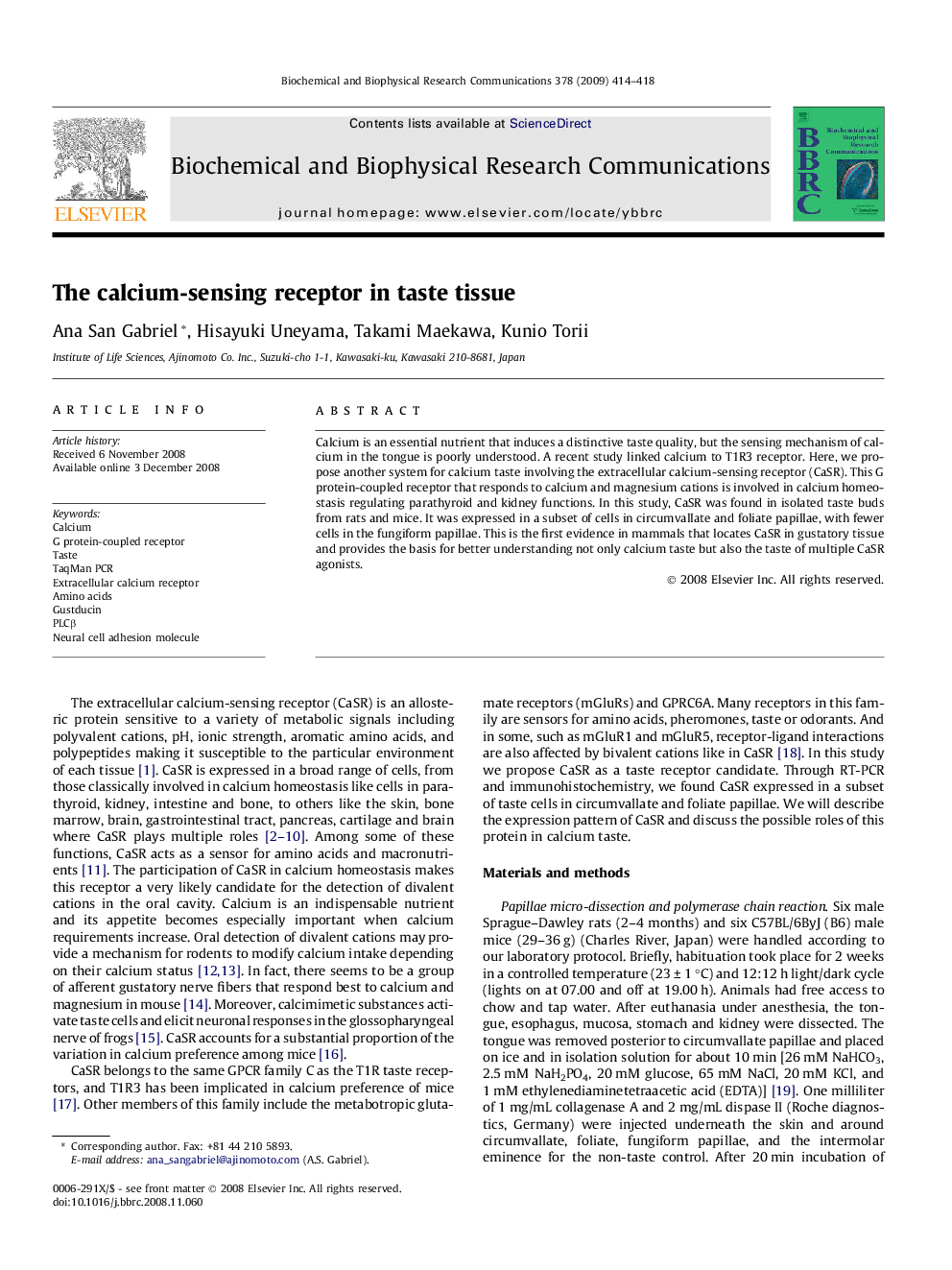| Article ID | Journal | Published Year | Pages | File Type |
|---|---|---|---|---|
| 1934550 | Biochemical and Biophysical Research Communications | 2009 | 5 Pages |
Calcium is an essential nutrient that induces a distinctive taste quality, but the sensing mechanism of calcium in the tongue is poorly understood. A recent study linked calcium to T1R3 receptor. Here, we propose another system for calcium taste involving the extracellular calcium-sensing receptor (CaSR). This G protein-coupled receptor that responds to calcium and magnesium cations is involved in calcium homeostasis regulating parathyroid and kidney functions. In this study, CaSR was found in isolated taste buds from rats and mice. It was expressed in a subset of cells in circumvallate and foliate papillae, with fewer cells in the fungiform papillae. This is the first evidence in mammals that locates CaSR in gustatory tissue and provides the basis for better understanding not only calcium taste but also the taste of multiple CaSR agonists.
